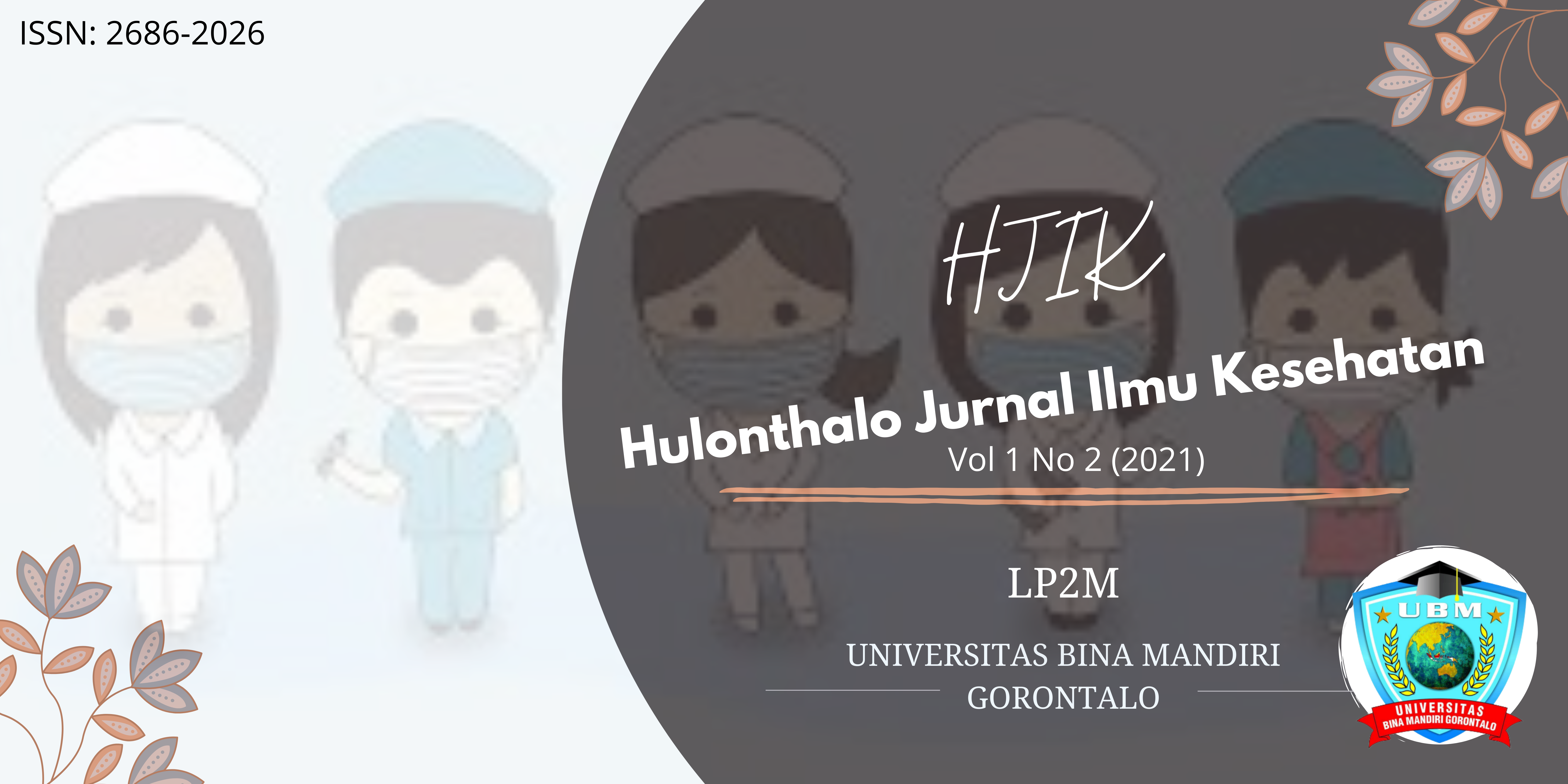IDENTIFICATION OF PARASITES MORPHOLOGY CAUSES OF PEDICULOSIS CAPITIS AND RISK FACTORS IN ORPHANS (CASE STUDY IN GORONTALO CITY)
Abstract
Pediculosis capitis is an infection of the scalp or hair in humans caused by parasites belonging to the Anoplura order. The aim of the study was to identify the parasite morphology that causes Pediculosis capitis and risk factors in an orphanage. This type of research is descriptive quantitative design.
The study population was all foster children in the orphanage in Gorontalo City with a sample size of 27 people. Sampling was cluster random sampling using univariate data analysis techniques.
The results of the research on the morphology of parasites that cause Pediculosis capitis are parasites belonging to the Anoplura order. 22 respondents (81.5%) suffered from the parasite that causes Pediculosis capitis, 5 (18.5%) did not suffer from Pediculosis capitis. The description of risk factors based on the most age 15-17 years was 11 people (40.7%), based on using a shared bed with 9 people (33.3%), based on the use of a shared pillow, namely 15 people who did not use a pillow together (55, 6%), based on the use of a shared hair comb as many as 12 people (44.4%), based on the use of the most hair accessories, namely sometimes using accessories as many as 10 people (37.0%), based on the frequency of washing hair, 3 times a week as many as 9 people (33.3%). The parasite that causes Pediculosis capitis in the orphanage in Gorontalo City is a parasite belonging to the order Anoplura (suction fleas). The conclusion is that Pediculosis capitis is a health problem in the orphanage. Suggestions for the need to maintain personal hygiene to reduce the incidence of Pediculosis capitis.











